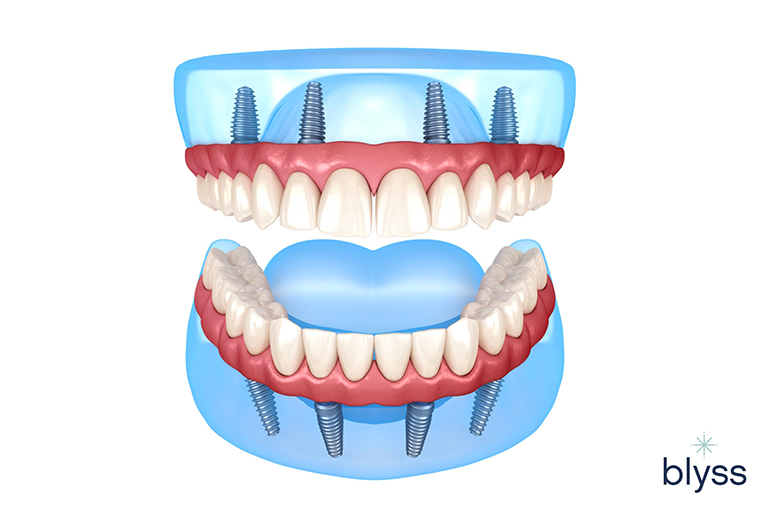Some Known Incorrect Statements About Dental Sense
Some Known Incorrect Statements About Dental Sense
Blog Article
More About Dental Sense
Table of ContentsDental Sense for DummiesOur Dental Sense StatementsSome Ideas on Dental Sense You Should KnowA Biased View of Dental Sense
are clinical tools operatively implanted into the jaw to recover an individual's capability to eat or their look. They offer assistance for artificial (phony) teeth, such as crowns, bridges, or dentures. When a tooth is shed as a result of injury or illness, a person can experience problems such as rapid bone loss, defective speech, or adjustments to eating patterns that result in discomfort.Oral implant systems contain an oral implant body and oral implant abutment and may also include a joint fixation screw. Dental implants. The oral implant body is surgically put in the jawbone instead of the tooth's root. The oral implant abutment is usually affixed to the implant body by the joint fixation screw and expands with gums right into the mouth to support the affixed synthetic teeth
(https://dentalsense1.weebly.com/)Structure of The Oral Implant System picking dental implants, talk with your dental provider concerning the possible benefits and risks, and whether you are a prospect for the treatment. Points to take into consideration: Your general health is an essential variable in identifying whether you are a good candidate for oral implants, how much time it will take to heal, and the length of time the implant might stay in area.
Smoking cigarettes might influence the healing process and reduce the long-lasting success of the dental implant. The healing procedure for the implant body might take several months or longer, throughout which time you usually have a temporary joint instead of the tooth. the oral implant treatment: Thoroughly comply with the dental hygiene instructions offered to you by your dental provider.
8 Simple Techniques For Dental Sense
Implant failing can result in the requirement for an additional medical procedure to repair or change the dental implant system. Brings back the capacity to eat Restores aesthetic look Aids maintain the jawbone from reducing due to bone loss Maintains the health of the surrounding bone and periodontals Helps maintain adjacent (nearby) teeth stable Boosts top quality of life Damage to surrounding all-natural teeth during implant positioning Injury to the surrounding cells throughout surgical treatment, such as sinus perforation Injury during surgical treatment (as an example, fracture of bordering jawbone) Insufficient function, such as really feeling like the teeth do not bite with each other typically An experience that the tooth is loose or turning in location resulting from a joint screw loosening up Implant body failure (looseness of the dental implant body) as a result of systemic infection, which may be most likely in individuals with unrestrained diabetes mellitus due to local infection in bone and gums supporting the implant body due to delayed healing, which may be more probable in individuals who smoke Problem cleaning up the periodontals around the implant, resulting in poor oral hygiene Neglected periodontal disease Post-surgical pins and needles due to nerve impingement or damage Constantly alert wellness treatment carriers and imaging professionals that you have oral implants prior to any type of magnetic resonance imaging (MRI) or x-ray procedures.
FDA is not aware of any kind of damaging occasions reported for MRI or x-ray procedures with dental implants. Oral implants systems are commonly made from materials that adhere to global agreement requirements of the International Organization for Standardization (ISO) or ASTM International. These criteria have information of what makes a safe material.

An oral implant is a framework that replaces a missing tooth. With screw-like tools, the cosmetic surgeon inserts an implant right into the jawbone, and it serves as a support for an artificial tooth, called a crown. A gadget called a joint connects the synthetic tooth to the oral implant. The crown is customized to fit the person's mouth and match the shade of their teeth.
Dental Sense Fundamentals Explained
Some people are not eligible for dental implant surgery. It is for dental surgeons to run on people with: acute illnessuncontrollable metabolic diseasebone or soft cells condition or infectionIf these concerns are settled, an individual can have the surgical treatment. In, oral specialists avoid operating individuals with: If individuals with any one of the above go through dental implant surgical procedure, there is a greater risk of the implant falling short.

Oral implant surgical treatment is a tailored procedure. Offer you time to recover. Connect the article and final crown, bridge or denture.
Next off, your specialist will very carefully place the oral implant into your jaw. If your implant is near the front of your mouth, your dental practitioner will certainly make a short-term tooth for you to put on up until you heal.
The Best Guide To Dental Sense
During the healing stage, your jawbone should fuse to the dental implant. This procedure can take anywhere from 3 to nine months.
As soon as your Read More Here implant heals, your dental practitioner can attach the abutment (little port blog post) and your last remediation (crown, bridge or denture). This generally takes about one hour to complete and might call for a second small surgical treatment. You shouldn't really feel any pain during your dental implant treatment due to the fact that your company will certainly make use of drug to numb your gums.
Report this page